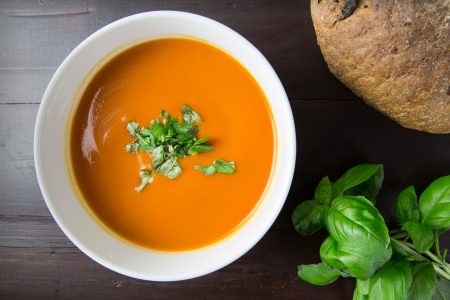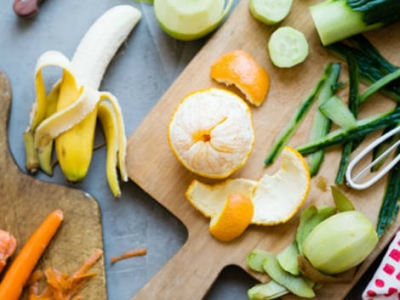Using Up Leftover Produce
It’s almost the time of year when the harvest season gifts us with fresh seasonal produce. While we’re lucky to have so much fresh fruit and vegetables available to us, the Commission for Environmental Cooperation recently found that from farm to table, Canada wastes 396 kilograms of food annually per capita.1 Together, we all have a responsibility to cut down on food waste. Today we’re sharing some creative ways to reduce the wastage of fruits and vegetables.
Ugly Fruit and Vegetables
One of the ways that we love to cut down on food waste is to learn to love ugly fruits and vegetables. We’ve all seen them – the produce at the supermarket that looks just a little bit different. Perhaps it’s a tomato that is undersized and not perfectly round, or a carrot that bends a funny way. Although these fruits and vegetables may not be as visually appealing, they are just as nutritious and great-tasting as regular produce. Some stores even offer a discount on imperfect produce as an incentive to use it up!

The Whole Fruit and Nothing But the Fruit
Think of the tops of carrots, the woody core of cabbage and cauliflower, the white part of leeks and onions, and the stalks of broccoli. While most people throw these parts away, they are a hidden source of flavor and nutrients! Keep these leftovers and add them to a plastic bag in the freezer. Once you have enough of them, the leftovers make an excellent vegetable stock for soup. A ratio of 1:1 vegetables to water yield a stock with a nice flavor and body. Bring the stock to a medium heat on the stove, and cook until the vegetables soften which takes around 5 minutes. Then, reduce the heat to a low simmer for 45 minutes. The, pour the broth through a fine mesh strainer and transfer it into airtight plastic containers or freezer bags for storage.2 Voila! Delicious homemade soup stock.

The Time is Ripe for Change!
As well-intentioned as we may be when we buy a bunch of fresh fruits and veggies at the grocery store, sometimes it’s difficult to eat them all before they start to lose their freshness. Luckily, there are a ton of options to save these fruits and vegetables!
- Freeze them: Put fruit and vegetables into an airtight bag or container and store them in the freezer. Once completely frozen, the produce will maintain their nutritional content. If stored properly, frozen veggies will stay good up to one year, and frozen fruits will stay good up to three months3
- Smoothies: Blend older fruit and vegetables into a smoothie for a delicious and refreshing beverage. Having frozen leftover produce ready to go makes it easy to make smoothies and keeps the smoothie cold! We recommend blending both fruits and vegetables for a wider variety of nutrients.
- Baking: As fruit get older and reaches peak ripeness, it gets softer and its starch starts to break down into fructose, giving it a sweeter taste. This makes overripe fruit perfect for baking! Try adding mashed banana, grated apple or pureed berries into muffins and loaves. Grated vegetables such as carrot and zucchini also great additives when baking that add sweetness, texture and nutrients.

Remember to take reducing food waste one step at a time. Small changes every day can make a big difference in the long run!
- Canada wastes 873 pounds of food per person a year (2018) http://business.financialpost.com/commodities/agriculture/report-finds-canadians-waste-a-lot-of-food-calls-for-action-2
- How to Make Vegetable Broth (2013) https://ohmyveggies.com/how-to-make-vegetable-broth-with-kitchen-scraps/
- 3 Ways to Love Your Ugly Food this National Nutrition Month (2018) http://www.fyp365.com/3-ways-to-love-your-ugly-food-this-national-nutrition-month/
- How to Make a Perfect Green Smoothie (2013) https://www.100daysofrealfood.com/green-smoothie-recipe/